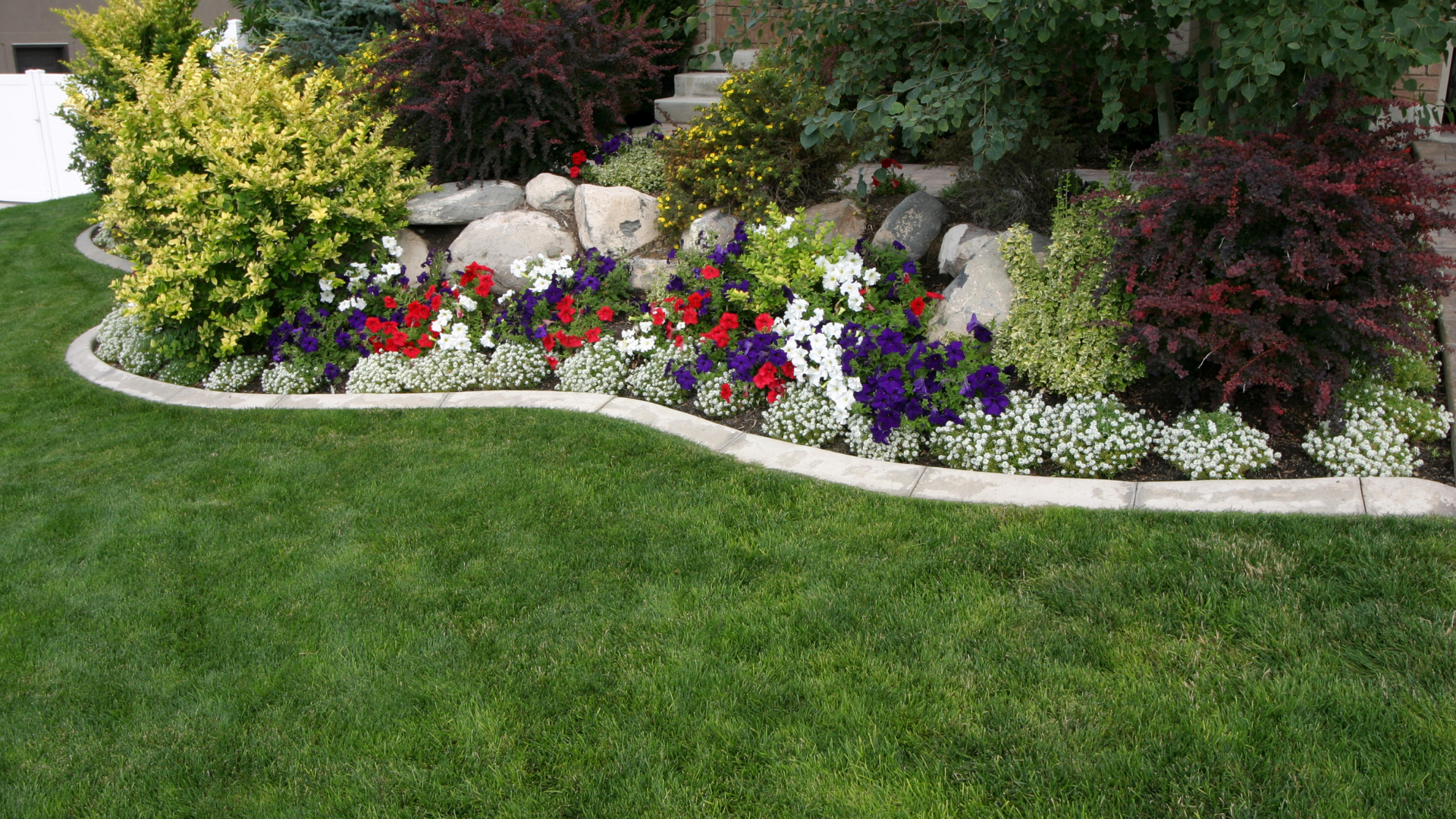Landscaping Tips for North Texas Soil and Weather
Landscaping Tips for North Texas Soil and Weather

Landscaping in North Texas presents a unique set of challenges—and opportunities. The heavy clay soil, long hot summers, and unpredictable rainfall patterns in areas like Celina, Prosper, and Gunter require a different approach than what works in other parts of the country. If you want a yard that looks great year-round and doesn't waste time or water, the key is to work with North Texas conditions—not against them.
In this guide, we’ll share essential landscaping tips tailored to North Texas soil and weather so your yard can thrive in every season.
Why North Texas Landscaping Requires a Different Strategy
Homeowners in Celina quickly learn that what works in books or Pinterest boards doesn’t always apply here. This region has:
- Dense clay soil that holds water and compacts easily
- Hot, dry summers with extreme heat from May to September
- Heavy storms and sudden downpours in spring and fall
- Mild winters that still experience occasional freezes
This combination demands smart plant selection, proper grading, water-efficient planning, and professional maintenance.
1. Understand Your Soil Type
Most of North Texas—including Celina—sits on clay-heavy soil. While it can be fertile, it’s also dense, slow-draining, and prone to compaction.
Common clay soil issues:
- Poor drainage and standing water
- Shallow root development
- Soil erosion or cracking during drought
- Plant stress from waterlogged roots
Landscaping tips for clay soil:
- Amend soil with organic compost to improve aeration and drainage
- Core aerate your lawn at least once a year to reduce compaction
- Use raised beds or mounded planting areas for vegetables or ornamentals
- Install French drains or grading solutions to direct water away from the home
Clay soil is manageable with the right prep and maintenance. At Celina Home Services, we specialize in treating and working with native soil—not against it.
2. Choose Native and Drought-Tolerant Plants
Texas weather swings between drought and downpour. That means your landscape needs plants that can survive with less water and handle extreme sun exposure.
Best native and drought-tolerant plants for North Texas:
- Texas Sage – Beautiful flowering shrub with silver foliage
- Salvia greggii (Autumn Sage) – Hardy perennial with vibrant blooms
- Lantana – Colorful groundcover that thrives in heat
- Blackfoot Daisy – Fragrant and tough with low water needs
- Mexican Feather Grass – Great for texture and movement
- Red Yucca – Architectural succulent that’s low maintenance
These plants naturally thrive in our conditions, require minimal watering once established, and add beauty to your yard year-round.
3. Don’t Forget Mulch—It’s Essential
Mulch is more than just decorative—it’s a vital component of any North Texas landscape.
Benefits of mulch in North Texas:
- Helps retain soil moisture during extreme heat
- Regulates root temperature during weather swings
- Prevents weed growth
- Protects soil from erosion during storms
Use 2–3 inches of natural hardwood mulch or cedar in beds, around trees, and in vegetable gardens. Avoid piling mulch against tree trunks or the base of plants.
4. Plan for Drainage from the Start
One of the most overlooked aspects of North Texas landscaping is drainage. The clay soil combined with sudden storms can result in soggy lawns, foundation issues, or eroded garden beds.
Smart drainage solutions include:
- French drains to capture and redirect water
- Dry creek beds to manage storm runoff naturally
- Downspout extensions to guide roof water away from the foundation
- Grading to ensure proper slope and water flow
Before installing new beds, turf, or hardscapes, it’s crucial to understand how water moves through your yard. Celina Home Services offers expert grading and drainage design as part of our landscape planning process.
5. Install an Efficient Irrigation System
In Celina and surrounding areas, water conservation is increasingly important. Relying on a hose and manual watering isn't just inefficient—it can also waste water and harm your plants.
Recommended irrigation upgrades:
- Drip irrigation systems for flower beds and vegetable gardens
- Smart sprinkler controllers that adjust to weather and soil conditions
- Zoned irrigation to avoid over- or under-watering different areas
- Routine sprinkler repairs to fix broken heads, leaky lines, and poor coverage
An efficient irrigation system keeps your landscape healthy and helps you comply with local watering restrictions.
6. Use Hardscaping for Function and Durability
Because of the clay soil’s instability and the heat extremes, hardscaping can add durability and style where traditional landscaping may struggle.
Hardscape ideas for North Texas:
- Stone patios that resist cracking in heat
- Raised garden beds to improve drainage
- Retaining walls to manage elevation and runoff
- Decomposed granite paths for permeability and low maintenance
Hardscaping provides structure, solves drainage problems, and reduces areas where turfgrass might struggle to grow.
7. Maintain Regular Seasonal Care
The key to long-term success in North Texas landscaping is regular seasonal maintenance tailored to our unique climate.
Seasonal tips:
- Spring: Aerate your lawn, add compost, prune winter damage, apply pre-emergent weed control
- Summer: Mulch, mow high to protect roots, adjust irrigation, monitor for drought stress
- Fall: Plant perennials, overseed lawns, apply fertilizer, clean gutters and drains
- Winter: Cut back dormant plants, protect root zones with mulch, prepare irrigation for freeze conditions
Celina Home Services offers seasonal landscaping packages to keep your yard looking its best through every North Texas season.
FAQs About Landscaping in North Texas
Is landscaping more difficult in North Texas?
It can be—but with the right plant selection, soil amendments, and drainage planning, a North Texas yard can be both beautiful and low maintenance. Local expertise is key.
Can I plant grass in clay soil?
Yes, but it requires preparation. Bermuda and Zoysia are popular warm-season grasses in North Texas. Aeration, topdressing, and proper irrigation are essential for success.
How do I deal with erosion in my yard?
Use retaining walls, dry creek beds, or strategically placed hardscaping to manage slopes and redirect runoff. Planting deep-rooted groundcovers and using mulch also helps prevent soil loss.
When is the best time to plant in North Texas?
Early spring (March–April) and fall (September–October) are the best times to plant in North Texas. These seasons offer mild temperatures and enough moisture to help plants establish.
What are the best trees for Celina yards?
Trees that do well in Celina’s climate include Live Oak, Cedar Elm, Redbud, Mexican Plum, and Vitex. These are drought-tolerant, resilient, and attractive for front or backyards.
Let Celina Home Services Build the Right Landscape for Your Yard
Landscaping in North Texas doesn’t have to be trial and error. At Celina Home Services, we bring years of experience working with North Texas soil and weather. Whether you need help building a new landscape from scratch or improving an existing one, we offer expert solutions in:
- Soil preparation and grading
- Drainage and irrigation planning
- Native plant and turf installation
- Seasonal cleanups and mulch application
- Hardscaping and outdoor living enhancements
Let’s build a landscape that’s designed to thrive in Celina—not just survive.



